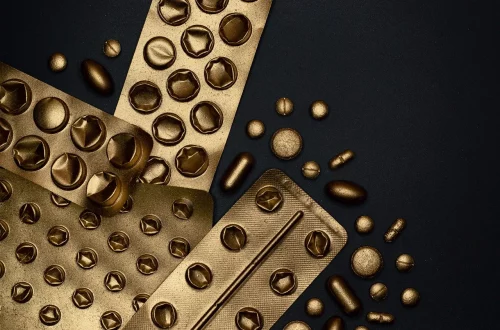
Essential Ear Piercings Healing Chart for Optimal Recovery
The art of body modification has been practiced for centuries, with ear piercings being one of the most popular forms. They hold cultural significance, represent personal style, and can enhance one’s appearance. However, the healing process for ear piercings is crucial for ensuring that the piercing heals correctly and without complications. Many individuals often overlook the importance of understanding how to care for their new piercings during the healing phase.
Proper aftercare is not only essential for a quick recovery but also plays a significant role in preventing infections and ensuring that the piercing remains open and healthy. The healing time for different types of ear piercings can vary, and certain factors can influence this process. For instance, the location of the piercing, the individual’s skin type, and their general health can all impact how quickly and smoothly a piercing heals.
Furthermore, the materials used for jewelry and the piercing technique can also affect healing. Understanding the timelines and what to expect during the healing process can help individuals manage their expectations and respond appropriately to any issues that may arise. This article aims to explore the various aspects of ear piercing healing, providing a comprehensive guide that will assist anyone considering or recently undergoing this body modification.
Understanding the Healing Process of Ear Piercings
When you get an ear piercing, your body begins a complex healing process almost immediately. This process can be broken down into several stages, each of which plays a critical role in the overall recovery timeline. The initial stage, known as inflammation, typically lasts for the first few days post-piercing. During this time, the body sends white blood cells to the area to fight off any potential infection. It’s common to experience some redness, swelling, and tenderness during this phase.
The next stage is the proliferation phase, which can last several weeks. In this period, new tissue begins to form around the piercing, creating a protective barrier. It’s vital to keep the area clean and avoid unnecessary irritation, as this can complicate healing. During this phase, many people may be tempted to change their jewelry, but it is generally advised to wait until the piercing has fully healed to avoid risking irritation or infection.
Finally, the maturation phase occurs, which can take several months to even years for the piercing to fully heal. This phase involves the piercing stabilizing as the surrounding tissue continues to strengthen. While the outer appearance of the piercing may seem healed, it’s essential to remember that the inner tissue may still be delicate.
Being aware of these stages allows individuals to practice better care during the healing process, leading to a more successful outcome. This knowledge also helps in identifying any potential issues early on, such as infections or allergic reactions, which can be addressed promptly.
Different Types of Ear Piercings and Their Healing Times
The healing time for ear piercings can vary significantly based on the type of piercing. Standard lobe piercings, which are the most common, typically heal within 6 to 8 weeks. However, cartilage piercings, such as helix or tragus piercings, may take anywhere from 3 to 12 months to fully heal. This extended healing time is due to the fact that cartilage has a lower blood supply compared to the fleshy lobe, making recovery slower.
For those considering multiple piercings, it’s worth noting that healing times can overlap. For example, if you choose to get a lobe and a cartilage piercing simultaneously, you may find that the lobe heals much more quickly. This means you must be especially diligent in caring for your piercings to prevent complications that could affect both areas.
Additionally, some specific types of piercings, such as industrial piercings, which consist of two holes connected by a single piece of jewelry, can take longer to heal due to the complexity and the amount of tissue involved. On the other hand, surface piercings, which sit on top of the skin rather than passing through it, are more prone to rejection and often require more careful monitoring.
Understanding these differences in healing times can help set realistic expectations and inform aftercare practices. It’s essential to follow specific care instructions for each type of piercing, as improper care can lead to prolonged healing or even piercing failure.
Aftercare Tips for Optimal Healing
Aftercare is crucial to ensuring that your ear piercings heal optimally. The first step in any aftercare routine is to keep the area clean. This means gently washing your hands before touching your piercings and cleaning the area with a saline solution or a fragrance-free antibacterial soap. It’s important to avoid using alcohol or hydrogen peroxide, as these can irritate the skin and delay healing.
Another vital aspect of aftercare is to avoid changing your jewelry too soon. It’s best to leave the initial jewelry in place for at least the recommended healing time. If you suspect an allergic reaction to the metal, consult a professional piercer before making any changes. Opting for high-quality materials such as surgical stainless steel, titanium, or gold can also reduce the risk of irritation.
Additionally, be cautious about sleeping positions. Sleeping directly on a newly pierced ear can cause added pressure, which may lead to discomfort or complications. Consider using a travel pillow or positioning yourself to avoid putting weight on the piercing while you sleep.
Monitoring your piercings for signs of infection is also paramount. Redness, swelling, or discharge can indicate a problem. If these symptoms occur, consult a professional piercer or a healthcare provider for advice. Early intervention can help prevent more serious issues from developing.
Lastly, patience is key. Healing is a process that takes time, and each individual’s body reacts differently. Follow your aftercare routine diligently, and allow your body the time it needs to heal properly.
Signs of Complications and When to Seek Help
While most ear piercings heal without issues, it is crucial to be aware of the signs of potential complications. Early detection can prevent more severe problems from arising. One of the first signs of trouble is excessive redness or swelling that persists beyond the initial healing stages. If the area feels warm to the touch or develops a consistent throbbing pain, these may be indicators of an infection.
Another common complication is the formation of keloids or hypertrophic scars. These raised areas of scar tissue can develop around the piercing site if the healing process is aggravated. If you notice excessive scarring or if the area becomes itchy or painful, it’s advisable to consult with a healthcare professional.
Discharge is another critical sign to monitor. While some clear fluid is normal during the healing process, any green, yellow, or foul-smelling discharge can indicate an infection that requires medical attention.
If you experience any severe allergic reactions, such as hives or swelling beyond the piercing site, seek immediate help. Allergic reactions can occur due to metals in the jewelry or other irritants in the environment.
In summary, understanding the signs of complications and seeking help when necessary is vital for a successful healing process. Your health and safety should always come first, so do not hesitate to reach out for professional advice.
**Disclaimer:** This article is for informational purposes only and should not be considered medical advice. Always consult with a healthcare professional for any health-related concerns.




